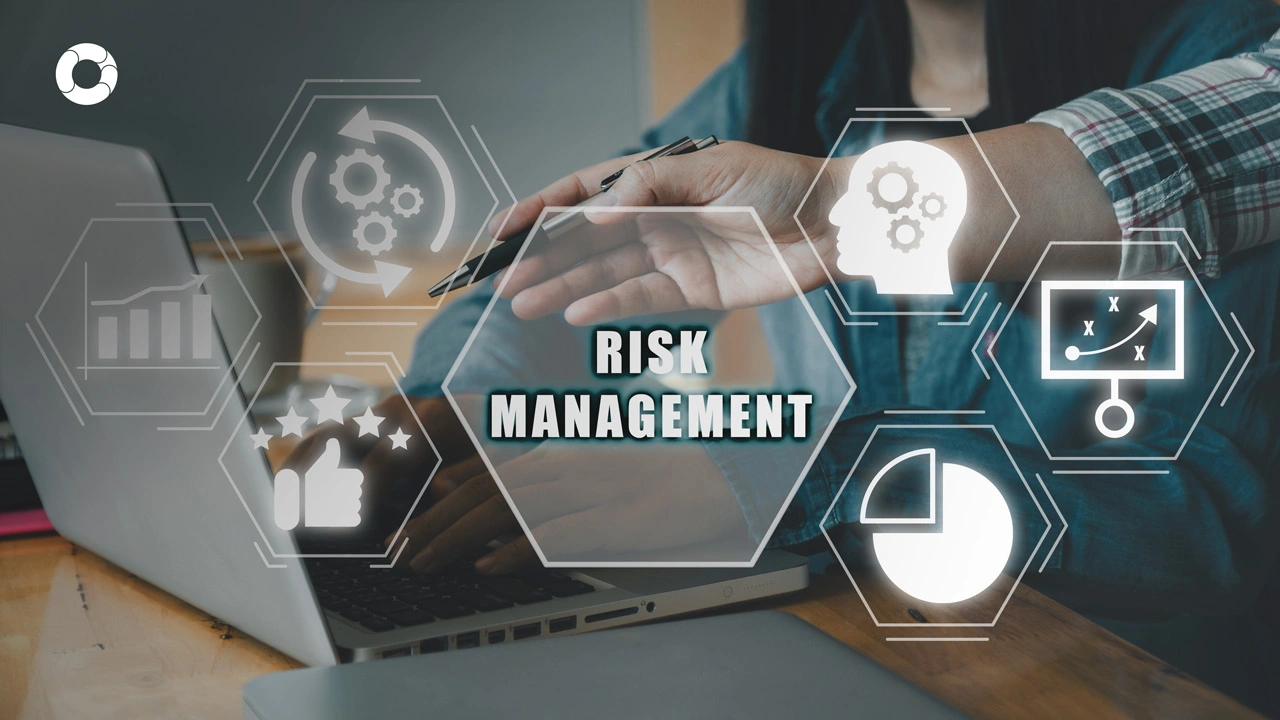Learn 5 strategies to manage risk

Risk management is essential for any organization, regardless of its size or sector, as no business is immune to risks that could impact its performance and hinder the achievement of its objectives. In today's complex business environment, many companies integrate risk management into their business models to anticipate potential issues and mitigate their effects on operations. Experts recommend managing risks through a reliable and secure platform, which enables more effective risk tracking and management.
Pirani Risk software is an excellent tool for executing a risk management strategy. It streamlines the management of Governance, Risk, and Compliance (GRC) processes by allowing companies to identify, measure, control, and monitor risks to prevent them from materializing or minimizing their impact if they occur. Alongside such tools, several key strategies can further enhance risk management efficiency. Below, we outline some crucial strategies for achieving successful risk management.
1. Acceptance of Risk
Risk acceptance involves identifying and acknowledging risks that do not significantly impede the achievement of organizational objectives. These are risks that the company can live with, but it is essential to create a strategy to adapt to these risks within the daily operations of the business. Risk acceptance does not mean ignoring the risk; rather, it means recognizing that the risk might occur and developing an action plan that focuses on managing its potential impact.
In practice, this strategy involves assessing the likelihood and potential impact of the risk and then deciding to tolerate it without taking significant action, other than monitoring it and being prepared to respond if necessary. This approach is often used for minor risks or when the cost of mitigation exceeds the benefit.
2. Risk Mitigation
Risk mitigation aims to reduce either the probability of a risk occurring or the severity of its impact on the company. This strategy is employed to ensure that if a risk occurs, its effects will be less severe due to a pre-implemented strategy. Organizations typically use this approach for risks that are unavoidable or external to the company.
Mitigation can take various forms, such as implementing safety measures, diversifying supply chains, or improving internal processes. The goal is to minimize the potential negative consequences of a risk, making it less likely to disrupt the organization’s operations or financial performance.
3. Risk Transfer
Risk transfer occurs when a company shifts the risk to another party, such as a different department within the organization or a subsidiary company. This strategy is often used for risks that can be shared between associated companies or those with some form of connection.
Common methods of risk transfer include outsourcing, insurance, and partnerships. By transferring the risk, the original company reduces its exposure to potential negative outcomes, although it may still retain some residual risk. This approach is particularly useful for financial risks, where the impact can be significant, but the risk can be shared or transferred to mitigate potential losses.
4. Exploitation of Risk
In some cases, risks can be viewed as opportunities for improvement within the organization. When a risk presents itself, the company may choose not to mitigate or eliminate it but rather to focus on leveraging the situation to gain a competitive advantage.
This approach might involve investing in new technologies, reallocating resources, or developing new strategies to capitalize on the risk. For example, a company might see a potential market downturn as an opportunity to acquire competitors at lower prices, thereby strengthening its market position. Exploiting risks requires a proactive mindset and a willingness to take calculated risks to achieve greater rewards.
5. Risk Suppression
Although it is rare, some companies may succeed in eliminating a risk. This is achieved when the risk management efforts have effectively implemented a solution that permanently addresses the issue through the acquisition of key data, expert support, additional resources, or improvements to the existing plan.
Risk suppression involves identifying the root causes of the risk and taking decisive actions to eliminate them. This might include discontinuing a product line, exiting a market, or overhauling an internal process. While this approach can be effective, it is important to consider the potential for secondary risks that may arise as a result of the changes made.
Considering Secondary Risks
It is important to recognize that each of these strategies can generate secondary risks that also need to be planned for in advance, depending on how they are classified. For instance, transferring a risk to another party might introduce new risks related to dependency on external partners. Similarly, exploiting a risk might expose the company to new vulnerabilities that were not initially apparent.
Customizing Risk Management Strategies
Every company is unique, and each organization has the freedom to choose how it wants to manage risks based on its specific needs and circumstances. The strategies outlined above each have their advantages and disadvantages, and in many cases, companies may end up using a combination of all five types of strategies to achieve a comprehensive and effective risk management approach.
For instance, a company might accept minor risks, mitigate others, transfer certain risks through insurance, exploit strategic risks for competitive gain, and suppress risks that pose a significant threat to its operations. By tailoring the risk management approach to the company’s specific situation, organizations can ensure that they are well-prepared to handle any challenges that arise.
Preparing for Crisis Management
In addition to these strategies, companies must be prepared to handle crisis situations that could damage their reputation and public image. This involves considering potential scenarios, having a media and spokesperson plan in place, and being ready to respond quickly to prevent the loss of customers, and market share, and to avoid negative publicity.
Effective crisis management requires a combination of planning, communication, and quick decision-making. Companies should regularly review and update their crisis management plans to ensure that they remain relevant and effective in the face of new risks and challenges.
Conclusion
Risk management is a vital component of any successful business strategy. By understanding and implementing various risk management strategies—such as risk acceptance, mitigation, transfer, exploitation, and suppression—companies can better protect themselves against financial and operational risks. Additionally, being prepared for crisis management is essential to safeguarding a company’s reputation and long-term success.
Using a platform like Pirani Risk can significantly enhance an organization’s ability to manage risks effectively. By integrating risk management into the company’s overall strategy, businesses can create a more resilient and agile organization that is better equipped to navigate the uncertainties of the business environment. Ultimately, proactive risk management not only protects the company but also positions it for growth and success in an increasingly complex and dynamic world.
You May Also Like
These Related Stories

Understanding the Main Objectives and Purposes of Risk Management

Navigating Operational Risk Management: An Overview

Crafting Risk Management Plan: Step-by-Step Guide

Key elements of the risk management system

Mastering KRIs: Unlock Risk Management Success



No Comments Yet
Let us know what you think